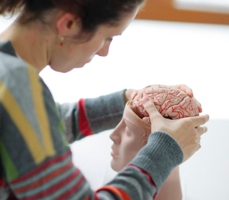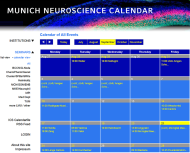MSc Neurosciences
Teaching Concept – Career Tailored Education
How does the brain work? Significant progress has been made in the field of cellular and molecular  neuroscience, and modern in vivo techniques have revolutionized non-invasive observation of brain activity even in humans. Today's challenges lies in understanding the brain as a complex functioning system and many problem remain to be solved.
neuroscience, and modern in vivo techniques have revolutionized non-invasive observation of brain activity even in humans. Today's challenges lies in understanding the brain as a complex functioning system and many problem remain to be solved.
The members of our teaching faculty, which include GSN or guest lecturers from external institutions, believe that the overwhelming complexity of the human brain can only be explained by applying different approaches and methods of the disciplines in neuroscience. The Master's program constantly works on educating a new generation of neuroscientists. With an excellent understanding of the molecular, cellular, and systemic principles of neurobiology, our students acquire a deeper knowledge of neuron-neuron interaction, the dynamics of neuron-glia interaction, rules of information transfer in simple and complex circuits of single brain centers, the interaction of different brain centers, and the function of the human brain. This educational concept of the Master Program in Neurosciences can be seen reflected in the curriculum.
Two academic tracks
Starting 2018, the GSN curriculum has been expanded in order to offer students more flexibility, as well as the opportunity to sharpen their academic profile. Students can now choose courses along either a Systemic-Cellular-Molecular Neuroscience track or a Computational Neuroscience track. Regardless of the selected track, all students will complete coursework within the other area, however, at a more moderate level.
Explore the links below for more information about a master's degree in neuroscience.








